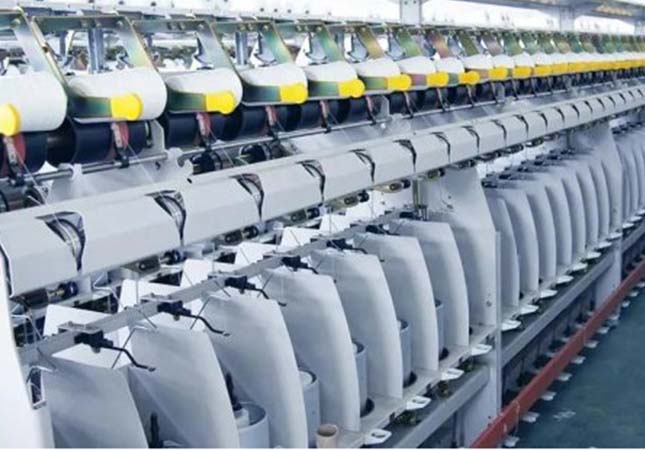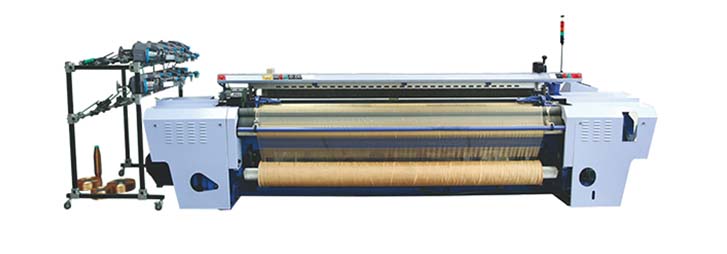India has a rich history of textiles, with weaving being an integral part of its cultural heritage. Over the years, the Indian weaving industry has undergone significant transformations, with the introduction of advanced weaving machine playing a crucial role. These machines have not only improved productivity and efficiency but have also opened new avenues for creativity and innovation.

Traditional Weaving Techniques
India has a diverse range of traditional weaving techniques, such as handlooms and power looms, which have been practiced for centuries. While these techniques are known for their intricate designs and skilled craftsmanship, they are often time-consuming and labor-intensive. Weaving machines emerged as a game-changer, addressing the challenges faced by the traditional methods.
The advent of power looms in the late 19th century marked the first significant shift in India's weaving industry. Power looms revolutionized the textile sector by mechanizing the weaving process. These machines significantly increased the production capacity, reduced labor requirements, and accelerated the overall weaving process. Power looms played a pivotal role in the industrialization of India's textile industry.
Modern Weaving Machine
With technological advancements, the weaving industry witnessed the emergence of modern weaving machines, further boosting productivity and quality. Advanced technologies such as shuttleless weaving, air-jet weaving, rapier weaving, and water-jet weaving replaced traditional shuttle-based weaving methods. These machines eliminated the limitations of conventional looms, offering higher speed, improved fabric quality, and reduced material wastage.
Development of Jacquard Looms
The development of Jacquard looms brought a new level of versatility and intricate design capabilities to the weaving industry. These looms integrated computerized control systems that enabled the weaving of complex patterns, designs, and even images. Jacquard looms revolutionized the production of intricate textiles like brocades, damasks, and tapestries, allowing weavers to create highly detailed and customized fabrics with ease.
Automation and Digitization
The integration of automation and digitization has further transformed the weaving industry in India. Computer-aided design (CAD) software enables weavers to create and simulate designs digitally, streamlining the production process. Automated looms equipped with sensors and programmable logic controllers (PLCs) ensure precise control over various weaving parameters, resulting in consistent and high-quality output.
These advancements have not only increased productivity but also reduced errors and minimized material wastage. Weaving machines have also played a significant role in enhancing sustainability in the textile industry. Modern machines offer better energy efficiency, reduced water consumption, and lower environmental impact compared to traditional methods. Additionally, the ability to weave with synthetic fibers and recycled materials has contributed to the development of eco-friendly textiles.
SUNTECH Weaving Machine
SUNTECH weaving machine offers a range of impressive specifications and features. ST-ERL-600 comes in various loom widths, including 150, 190, 230(220), 250, 280, 320, 340, and 360, catering to different fabric requirements. With a maximum speed of 350-600rpm, it ensures efficient and high-speed production. The weft insertion mechanism utilizes a special four spacial connecting rod drive, eliminating the need for a guiding hook. The weft feeding options include suspending single hook or suspending double hook, providing flexibility in fabric creation.

To ensure proper weft battening, the machine employs a matched cam located in the tank wall. This ensures even and uniform fabric texture. With 8 electronic color selecting options, the machine allows for the creation of vibrant and intricate patterns. The shedding device offers two choices: electronic dobby with 16-20 shafts or an electronic jacquard system. This enables the weaving of complex designs with ease.
This weaving machine incorporates electronic let-off and take-up systems, ensuring precise control over warp tension and weft density. The electronic let-off supports warp beams with diameters of 800mm or 1000mm, while the electronic take-up offers a weft density range of 1-150 picks/cm. The cloth roll diameter can be either 600mm or, for larger fabric rolls, the cloth can be rolled out of the machine with a diameter of 1200mm.
For lubrication, the machine provides multiple options: spray lubrication, oil bath lubrication, manual oil pump lubrication, and oil gas lubrication. These lubrication methods work together to ensure smooth and efficient operation. Additionally, the machine features automatic weft seeking with electromagnetic clutch technology, enabling precise and reliable weft insertion, as well as heald reversing.
The machine is equipped with a PLC controlling system, offering various automatic control functions such as auto-stop, auto-start, auto weft seeking, overcompensation, weft compensation, and auto fault recognition. These features enhance operational efficiency and minimize errors. The main motor, with a power range of 5.5-7.5KW, provides the necessary drive for smooth and reliable weaving operations.
SUNTECH weaving machine combines advanced technology and features to meet the diverse needs of the textile industry. With its wide loom width options, high-speed operation, precise weft insertion, versatile shedding devices, electronic let-off and take-up systems, advanced lubrication methods, automatic weft seeking, and comprehensive automatic control capabilities, it offers an efficient and productive solution for textile manufacturers.
SUNTECH Textile Machinery has the range of products encompasses almost all fabric types, including but not limited to pinking machine, loom machine, weaving machine, beam truck, fabric cutting machine, motorized beam trolley, beam storage, and fabric inspection machine. SUNTECH Textile Machinery continues to lead the textile industry with its innovative approach and extensive experience. We welcomes quotes and cooperation opportunities with open arms.
Conclusion
The development of weaving machines has undoubtedly revolutionized India's weaving industry. From the early introduction of power looms to the modern automation and digitization, these machines have enhanced productivity, quality, and design capabilities. Weaving machines have not only provided economic benefits by increasing production capacities but have also contributed to sustainability and the preservation of traditional weaving techniques. As India continues to embrace technological advancements, the weaving industry is poised for further growth and innovation, creating new opportunities for both artisans and entrepreneurs alike.




